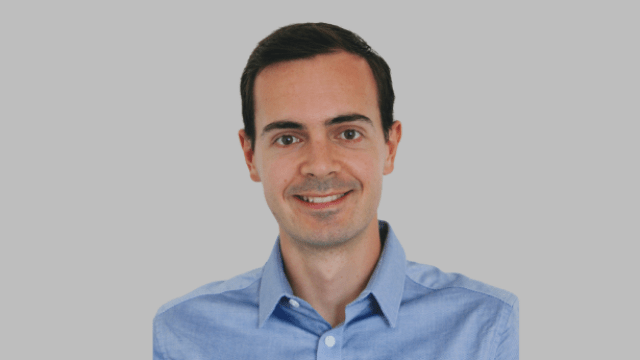Ronan Scanff is an alumnus of the mechanical engineering department and a research engineer at Siemens. He joined this international group following a CIFRE thesis carried out in collaboration with the Laboratory of Mechanics and Technology, now the Laboratory of Mechanics Paris-Saclay (LMPS - CentraleSupelec/ENS Paris-Saclay/CNRS/Université Paris-Saclay).
He defended his CIFRE thesis "A weakly intrusive vision of the LATIN-PGD method in non-linear" in 2022, with the Laboratory of Mechanics Paris-Saclay (LMPS - CentraleSupelec/ENS Paris-Saclay/CNRS/Université Paris-Saclay). He has just received the CSMA 2022 thesis award. His thesis work was supervised by David Néron with co-supervision from Pierre Ladevèze (Laboratory of Mechanics Paris-Saclay) and Philippe Barabinot (Siemens Digital Industries Software).
Today he is a research engineer at Siemens.
"I wondered: how could I make an informed decision for the future of my research life without knowing each of these two worlds? A CIFRE thesis seemed then the ideal solution!"
INTERVIEW
What is your academic background?
It was after my years of preparatory classes that I had the pleasure of being able to join ENS Paris-Saclay (formerly ENS Cachan). I joined the SAPHIRE program before continuing in Master 1 "Mechanics of Materials and Structures" and then in "Master 2 Higher Education Training." Once I had the aggregation in hand and interested in numerical aspects, I turned to the Master 2 "Research Modeling and Simulation in Mechanics of Structures and Coupled Systems."
Beyond this preliminary description of my academic journey, these four years of study allowed me to gradually refine my professional orientation. The Supervised Research Work (TER) in Master 1 introduced me to the world of research in the field of Computational Mechanics. An experience I wanted to continue through an internship at the University of Texas, where I faced High-Performance Computing (HPC) issues: the fluid models I manipulated required several days of calculations on supercomputers with several thousand cores. Retrospectively, I believe that the first seeds of what would later become one of the central themes of my thesis were sown here.
Why did you choose to take the aggregation?
I would say that the prospect of a year of training in higher education attracted me above all. Taking the time to take stock of the achievements, making connections between different fields, (re)discovering things with a fresh perspective, and, above all, learning to be pedagogical, are all elements that I found very enriching.
And what led you to do your thesis with Siemens?
Having until then carried out all my experiences in academia, I strongly wanted to discover the world of business. I wondered: how could I make an informed decision for the future of my research life without knowing each of these two worlds? A CIFRE thesis seemed then the ideal solution! And it turned out that in the year of my Master 2 Research, Siemens was precisely proposing a thesis topic: the meeting was made!
Can you describe your subject?
In a nutshell, Siemens' proposed thesis topic focused on developing a methodology to easily integrate model reduction tools, in a nonlinear context, into an industrial calculation code, without disrupting everything. Model reduction methods are known to be powerful decision-making tools by drastically reducing calculation times but have the bad taste of being particularly intrusive, i.e., using algorithms and data structures atypical of industrial calculation codes.
Beyond being able to discover the world of business and the intricacies of commercial software, I found in this subject a familiar idea that was close to my heart: minimizing prohibitive calculation times as much as possible. What finally convinced me was the supervisory team, David Néron and Pierre Ladevèze, who had already collaborated with Siemens in the past and with whom I got along very well.
How did your thesis go, and what was the outcome?
I really enjoyed these three years of doctoral studies: the atmosphere in the laboratory, discovering the business world, being at the interface between academic research and industrial research... To such an extent that, in my new role as a research engineer at Siemens today, I seek to preserve these ties and even to make them grow.
Following my thesis, I was indeed directly hired by the company within the team I was working with. I still continue my collaboration with ENS Paris-Saclay, with the signing of an agreement planned soon, and co-supervise a thesis topic. In a way, the loop is closed!

Comments0
Please log in to see or add a comment
Suggested Articles


